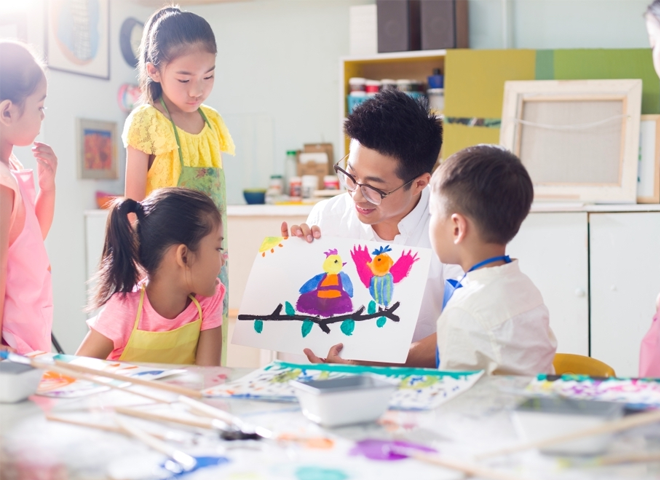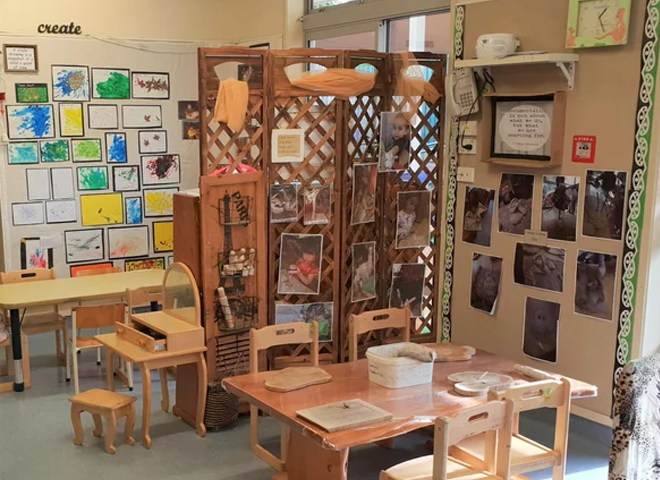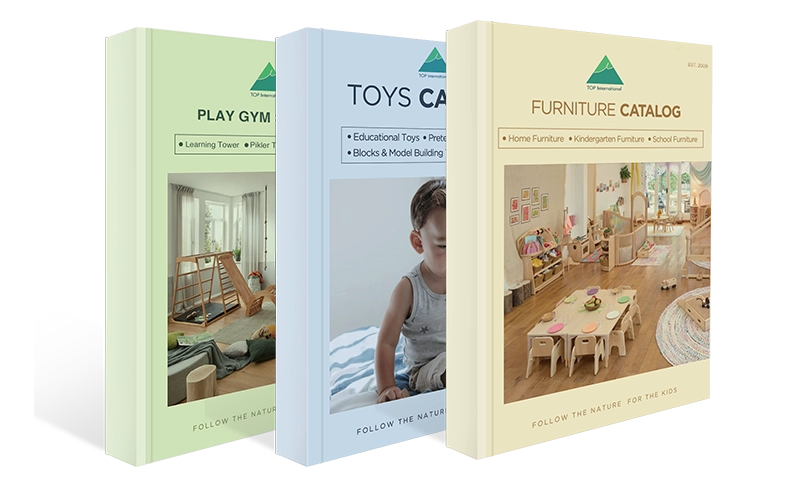What makes the Reggio Emilia Approach stand out in the dynamic world of early childhood education? How has this unique educational philosophy, born in Reggio Emilia, Italy, managed to enchant teachers and parents across the globe? Renowned for its focus on child-led exploration, collaboration, and creativity, the Reggio Emilia Approach nurtures each child’s potential, fostering a deep connection with their learning environment and promoting a culture of curiosity and innovation.
Central to the Reggio Emilia Approach is a profound respect for the child. This philosophy acknowledges children’s innate curiosity and capacity to drive their learning experiences through exploration and discovery. Its focus on teamwork and thinking that kids have many different ways to show what they’re thinking and feeling helps create a learning environment that supports and encourages being creative.
The Reggio Emilia Approach transforms the educational approach, blurring the lines between learning and play. It encourages a partnership among children, teachers, and the community, creating an inclusive atmosphere where kids are viewed as thinkers, creators, and contributors to their education. This approach elevates the learning experience and leads us to reimagine kids’ education.
What is the Reggio Emilia Approach
The Reggio Emilia Approach started in a small town in Italy named Reggio Emilia right after World War II ended. It was a tough time, but local parents and teachers were full of hope for their children’s futures. They wanted something better, something new for their kids’ education. Led by an educator named Loris Malaguzzi, they built an approach to teaching that put kids at the center, emphasizing learning through exploration, respect, and community involvement. This wasn’t merely the launch of a new educational method; it also signified the beginning of a global movement.

Core Philosophy & Principles

Respect kids
The approach starts with a fundamental respect for children as capable individuals, full of potential and ready to engage with the world. This perspective sees kids not as vessels to fill with knowledge but as active participants in their growth.
Environment as the Third Teacher
The role of the environment in learning cannot be overstated. Classrooms are designed to inspire curiosity and serve as conducive spaces for exploration, becoming a ‘third teacher’ alongside teachers and classmates.


Teachers as Facilitators
Teachers in the Reggio Emilia Approach adopt the role of facilitators rather than traditional instructors. Their job is to observe, listen, and provide resources that align with the children’s interests, guiding their exploration and discovery.
The Hundred Languages of Kids
A cornerstone of the Reggio philosophy is acknowledging the hundred languages of kids. This principle highlights the multitude of ways kids express themselves—through art, movement, play, and more—valuing creative expression as a vital part of learning.


Parental and Community Involvement
The approach emphasizes the importance of a robust and collaborative relationship between the school, the family, and the wider community. This partnership supports a child’s learning experience, grounding it in a real-world context that enriches their development.
Documentation as a Learning Tool
Documentation of children’s work and experiences plays a critical role. It’s a reflective practice that makes learning visible, allowing for ongoing dialogue about the learning process among children, teachers, and parents.

Approach’s Main Features
The Reggio approach brings a fresh perspective to early education, characterized by its unique elements. At its core is the principle that children have an innate ability to learn through interaction with their surroundings, a principle known as the “hundred languages.” Unlike traditional models, this approach utilizes physical space as an integral part of education, carefully designed to stimulate reflection and exploration. For students and teachers, it is a reflective tool that fosters ongoing dialogue about the educational process. Through these unique features, the Reggio Method fosters an educational experience that promotes innovation, collaboration, and critical thinking, making it stand out in early childhood education.

Right for Your Child?
Deciding if the Reggio Emilia Approach best fits your child involves considering several vital aspects. This approach is known for its emphasis on self-directed learning, creativity, and collaboration. It’s ideal for families who value active participation in their child’s education. Moreover, parents looking for an educational setting that encourages partnership between teachers, children, and the community will find the Reggio Emilia Approach aligns with their ideals. Thinking about your child’s learning style and your educational values will guide you in determining whether this innovative and child-centric approach will nurture your child’s potential and curiosity.

Teacher Role Explained
In the Reggio Emilia Approach, the role of the teacher undergoes a significant transformation. Far from being mere instructors, teachers are seen as collaborators and guides in the learning process. They work closely with kids, observing their interests and facilitating their exploration through questioning and providing resources. This partnership fosters an environment where children feel empowered to direct their learning, with teachers supporting and enriching their discoveries. By adopting this approach, teachers embrace a dynamic role, becoming learners themselves as they adapt to meet the needs and curiosities of each child. This collaborative relationship between teacher and student is pivotal, encouraging deep, mutual respect.

Environmental impacts
Active Learning Spaces
In the Reggio Emilia Approach, the learning environment is more than just a backdrop; it’s an active participant in the educational process. Designed with intention, the setting stimulates curiosity and encourages exploration, effectively becoming a ‘third teacher.’ Spaces are thoughtfully organized to promote creativity and interaction equipped with materials that reflect and extend the children’s interests and projects.

Design and Materials
In a Reggio Emilia classroom, the setup is straightforward yet inviting, with plenty of wooden furniture adding a touch of the outdoors inside. Think simple tables and chairs, shelves holding jars of natural items like rocks and pine. This setup is about creating a comfortable, engaging environment where everything is intentionally chosen to spark curiosity and encourage hands-on learning. The wooden elements bring a bit of nature inside, making the space connect to the outside world. Here, learning happens naturally, with materials that invite kids to play and discover at their own pace.

Documentation’s Role
Documentation within the Reggio Emilia Approach serves a pivotal function, acting as a bridge between teachers, children, and parents to deepen the understanding of the learning journey. It involves capturing moments of exploration and discovery through various forms, such as photographs, transcripts of children’s conversations, and displays of their work. This process celebrates the children’s achievements and offers invaluable insights into their thought processes, facilitating reflection among all participants. Through careful documentation, educators can tailor their teaching strategies to meet the children’s interests and needs better, ensuring a responsive and evolving educational experience. Additionally, this ongoing record provides a tangible connection for parents to their child’s day-to-day learning, fostering a more robust community bond around the educational process.

Inspired Activities & Projects
Activities and projects inspired by the Reggio Emilia Approach are designed to ignite the imagination and stimulate inquiry among young learners. Rooted in the interests and curiosities of the children, these initiatives encourage hands-on exploration and creative expression. Whether constructing a miniature city from recycled materials, engaging in a group painting inspired by a story, or exploring the physics of water through play, each project is tailored to provoke thought and collaboration. The aim is to create a rich tapestry of experiences where children can delve into topics deeply, ask questions, and share ideas. This approach nurtures a love for learning and fosters problem-solving and communication skills, preparing children for a lifetime of curiosity.

Approach Outcomes
The outcomes of the Reggio Emilia Approach are both profound and wide-reaching, impacting children in multiple aspects of their development. This approach fosters independence, creativity, and a deep-seated love for discovery by placing the child at the center of their learning. Children become adept at expressing their ideas and thoughts in numerous ways, enhancing their communication skills and boosting confidence.

Enhanced Creative Expression
Children immersed in the Reggio Emilia environment often show remarkable creative thinking and expression levels. They learn to use various ‘languages’—from painting and sculpture to dance and storytelling—to convey their understanding of the world around them.
Strong Social Skills
The collaborative nature of the approach also significantly enhances children’s social skills. Engaging in projects with peers, negotiating ideas, and sharing discoveries help them develop empathy, respect, and the ability to work effectively in a team.


Lifelong Love for Learning
The Reggio Emilia Approach instills a lifelong passion for learning. The emphasis on exploration and discovery ensures that children remain curious and enthusiastic about understanding new concepts and ideas, which serves them well beyond their early years.
Implementing the Approach
Adopting the Reggio Emilia Approach within an educational setting requires thoughtful adaptation and commitment to its core principles. This method emphasizes the importance of viewing children as capable learners, fostering an environment that encourages exploration, and ensuring collaboration between educators, parents, and the community.
- Fostering a Supportive Environment
Creating a learning space that reflects the values of the Reggio Emilia Approach is the first step. This involves designing inviting and stimulating environments filled with natural materials and opportunities for open-ended exploration.
- Collaborative Learning Culture
Building a culture of collaboration among teachers, parents, and children is crucial. This means embracing a curriculum that evolves based on the interests of the children.
- Community and Family Engagement
Successful implementation also depends on strong ties with the community and the active involvement of families. Encouraging parents to participate in the learning process and seeking opportunities for real-world engagement enriches the educational experience for children.

Varied Perspectives
The Reggio Emilia Approach garners varied views from teachers, parents, and scholars. Many applaud its focus on child-led learning, creativity, and notable developmental progress. The method’s promotion of community ties and parental involvement is also valued. Yet, some critique the challenges of integrating its flexible curriculum into traditional educational frameworks or across cultures. Despite these debates, the Reggio Emilia Approach enriches early childhood education discourse, advocating for innovations that prioritize and elevate children’s voices in their learning experiences.

Conclusion: Impact & Benefits
The Reggio Emilia Approach has left a profound impact on the landscape of kids education, celebrated for its holistic development of kids. It nurtures intellectual growth and emotional and social development, preparing children with confidence and empathy for the world’s complexities.
In addition to Reggio Emilia’s education, there are also Montessori and Waldorf educational philosophies. Montessori emphasizes individual learning with structured activities, while Reggio Emilia focuses on group projects and child-led exploration. While Montessori and Reggio both value child autonomy, Reggio places more emphasis on social collaboration compared to Montessori’s focus on self-directed tasks.

Moreover, the benefits of adopting the Reggio Emilia Approach extend beyond the classroom. It fosters environments where families and communities come together to support children’s learning. As a result, it creates a collaborative network that values education as a shared responsibility, highlighting the approach’s transformative potential for societies valuing innovation, collaboration, and respect in education.







